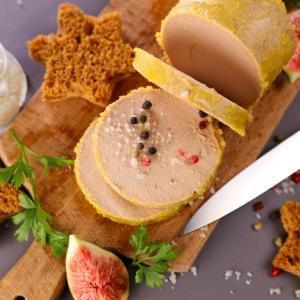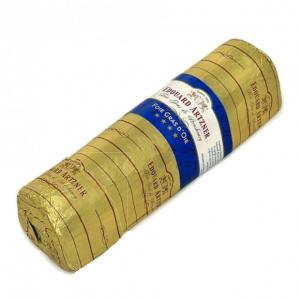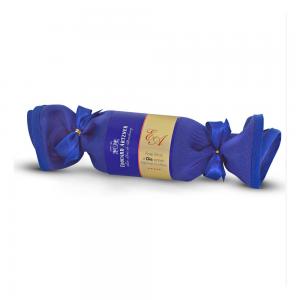

- Distinguishing Goose Foie Gras from Duck Foie Gras at a glance
- Understanding the different origins
- Distinguishing the taste of Goose Foie Gras and Duck Foie Gras
- Discovering different production methods
- Appreciating the different textures
- Goose Foie Gras or Duck Foie Gras: what are the differences in color and appearance?
- Goose Foie Gras or Duck Foie Gras: which is more expensive?
- Choosing the right Foie Gras for different uses
Are you wondering how to distinguish between different types of Foie Gras? What are the characteristics of each? How can you make the perfect choice for your special occasions? Color, flavor, origin, quality, recipe... In this article, Édouard Artzner helps you with your selection and answers the question: Goose Foie Gras or Duck Foie Gras: what are the differences?
Distinguishing Goose Foie Gras from Duck Foie Gras at a glance
| Goose | Duck | |
| Origin | Mainly an Alsace specialty | Mainly produced in southwestern France |
| Flavor | Subtlety, finesse, and a gourmet finish | Bold, rustic, and pronounced, with a more robust character |
| Color | Paler, pinker flesh | Darker liver, often with more yellowish tones |
| Texture | Firm and fine | Creamy and smooth |
| Price | More expensive due to its limited production | Less expensive |
| Ideal for | Connoisseurs of delicate flavors and culinary finesse | Those who seek bold and rustic tastes |
| Perfect wine pairing | Paired with Champagne or sweet white wines like Gewurztraminer | Pairs well with tannic red wines or sweet whites like Muscat |
🥄 To delve deeper into the topic, find all the information in our Foie Gras Guide.
Understanding the different origins
Alsace
Alsace is renowned for its Foie Gras production, primarily goose. This tradition, deeply rooted in the Alsatian terroir, marks a significant chapter in the history of French gastronomy. In the 17th century, Alsace perfected the methods of breeding and feeding geese, producing a creamy and delicate Foie Gras. The invention of canning processes in the 19th century allowed local producers to preserve and export their Foie Gras, contributing to its global reputation. This region remains an essential reference for lovers of Goose Foie Gras.
The Southwest
The Southwest, particularly Périgord, is another emblematic area for Foie Gras production. 90% of Duck Foie Gras comes from this region of France. It is now known for its authentic products, resulting from traditional and rigorous methods.
🥄 Why not try a comparative tasting of the two recipes? Treat yourself to a "duo" box and have fun identifying each type of Foie Gras blindfolded.
Distinguishing the taste of Goose Foie Gras and Duck Foie Gras
Different animals mean different flesh, liver, and therefore flavors.
Goose Foie Gras is renowned for its finesse and subtlety, full of delicacy. In contrast, Duck Foie Gras is characterized by a more pronounced and robust flavor.
The diet of waterfowl plays a crucial role in the quality of Foie Gras. Corn, the main component of geese and ducks' diet, is rich in starch. This specific diet for each species, combined with the feeding method, strongly influences the texture and flavors of the final product.
Discovering different production methods
The production methods for Foie Gras vary significantly between Alsace and the Southwest, between ducks and geese. This is due to the distinct culinary traditions of each region. Here’s how they differ:
- The Southwest method favors simple seasoning. Only salt and pepper are added to highlight the natural flavors of duck liver. This gastronomic minimalism reveals the authentic taste of Foie Gras.
- In Alsace, the preparation of Foie Gras is more elaborate, reflecting a rich aromatic culinary tradition. The seasoning consists of a combination of 11 spices, including nutmeg, cloves, and cinnamon, among others. The Édouard Artzner House has carefully guarded the secret of its unique blend since 1803! Alsatian Goose Foie Gras is thus elevated and offers a complex and fragrant flavor that is characteristic.
Appreciating the different textures
Goose Foie Gras is valued for its fineness, density, and smoothness, while duck's texture is slightly more tender.
Between Goose Foie Gras and Duck Foie Gras, which is fattier?
Duck Foie Gras is considered fattier.
Between Goose Foie Gras and Duck Foie Gras, which is lighter?
Calorically, both types of Foie Gras are equivalent and rich. However, the delicacy of goose liver gives an impression of greater lightness on the palate.
Between Goose Foie Gras and Duck Foie Gras, which is easier to digest?
Lipids slow down digestion, that’s a fact. Whether it’s goose or duck, Foie Gras contains a lot of them. To make it easier to digest, avoid adding too many calories with the accompaniments and enjoy your tasting! After all, it’s the pleasure of an exceptional dish that you seek when offering Foie Gras to your guests during the holidays, not the dietetics…
Goose Foie Gras or Duck Foie Gras: what are the differences in color and appearance?
Goose Foie Gras stands out for its hue. Slightly pink when raw; once cooked, it tends toward gray and has a duller appearance. On the other hand, Duck Foie Gras has a color ranging from beige to orange.
Due to its larger size and density, Goose Foie Gras holds up very well when hot and tends to melt less during cooking. It loses very little volume and exudes little fat. It's ideal for a terrine recipe!
🥄 In both cases, when buying Fresh Foie Gras or raw, make sure to choose lobes that are smooth, supple, and firm to the touch. Check that they are uniformly colored.
Goose Foie Gras or Duck Foie Gras: which is more expensive?
Duck Foie Gras is more affordable. The price difference is due to the rarity of geese, specific breeding methods, and higher production costs.
🥄 To ensure you make the right choice when shopping online, read our online Foie Gras guide.
Choosing the right Foie Gras for different uses
Goose Foie Gras is ideal for Christmas and special occasions.
- Raw: Try terrine recipes, especially by combining it with a sweet and fragrant product like vanilla.
- Fresh: Opt for the simplicity of crispy bread and a green salad to appreciate its subtlety.
- Semi-cooked: Pairs harmoniously with chutneys or jams, served on fresh or lightly toasted bread.
- Food and wine pairing: Elegantly accompanies fruity white wines, sweet or dry, and of course, champagne for added refinement.
Duck Foie Gras adapts to all your celebratory meal plans.
- Raw: Perfect for pan-searing or preparing jars with whole lobes.
- Fresh or semi-cooked: In cloth or in a can, cut beautiful slices for a festive starter.
- Foie Gras Block: This is the ideal packaging for appetizer toasts.
- Food and wine pairing: Serve pan-seared foie with a tannic red and toasts with a sweet white or a sparkling crémant.
You are now well-versed in these exceptional products. To the question "Goose Foie Gras or Duck Foie Gras: what are the differences?" you can now answer that it’s a matter of tradition, preparation, origin, and aromas that bring elegance to every tasting!




